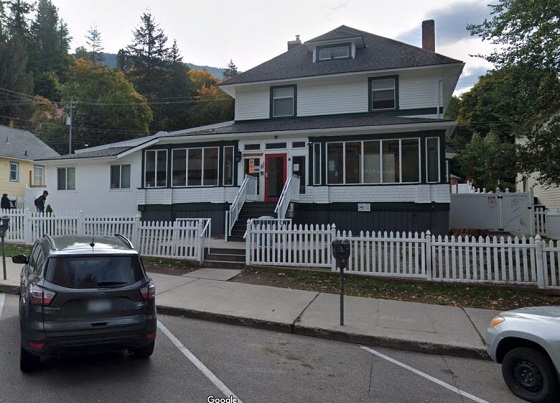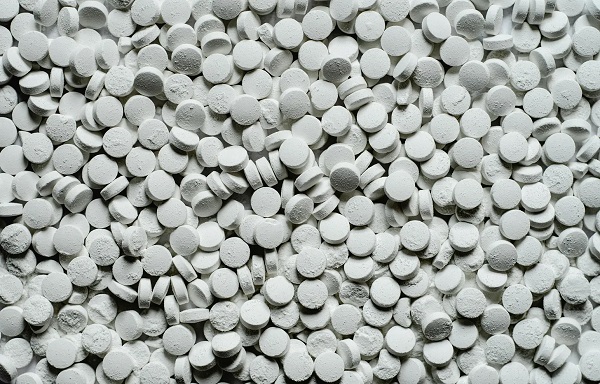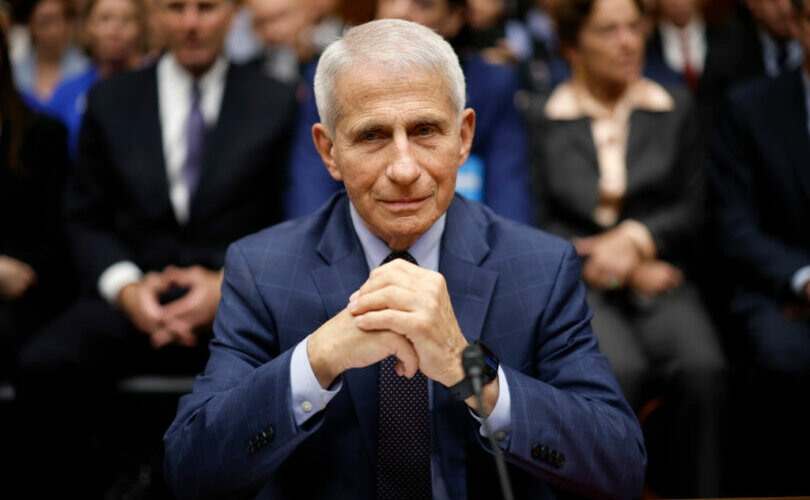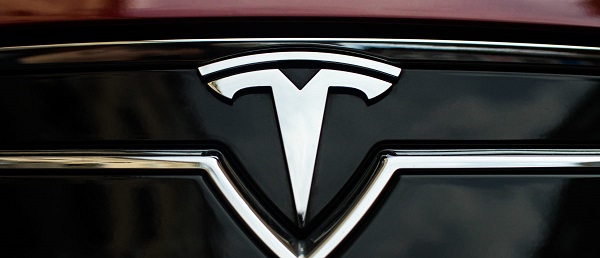Addictions
Harm reduction projects in Nelson are fraying the city’s social fabric, residents say

News release from Break The Needle
Public disorder and open drug use raise concerns in picturesque mountain-rimmed town.
“Just the other night, we had an intruder in our yard,” Kirsten Stolee recounted, her voice unsteady. Her two daughters often watch television with their windows open. “He easily could have gotten inside,” she said.
Stolee lives in Nelson, a picturesque, mountain-rimmed town in BC’s Southern Interior that is struggling with rising public disorder. Some residents, herself included, say that local harm reduction initiatives – which appear to be operating without adequate accountability and safety measures – are responsible for the decay.
Near Stolee’s house, one can find the Stepping Stones emergency shelter alongside the former Nelson Friendship Outreach Clubhouse, which used to provide support services for individuals struggling with mental health issues before being abandoned late last year.
When the clubhouse still operated, supporters claimed that it provided clients with a space to socialize and partake in “art, gardening, cooking and summer camp” – but critics countered that it was a drop-in centre for drug users. After the provincial government announced plans to open a supervised inhalation site at the clubhouse early last year, local residents protested and had the project, and eventually the clubhouse itself, shut down.
Although Stolee supports harm reduction in principle, she opposed the opening of the inhalation site on safety grounds. The incidents near her home were concerning: an assault just outside her window, a drug-addled individual stabbing a pole with scissors, people carrying weapons on the street in front of the site. When her daughter’s phone was stolen, it was eventually recovered from a man at the clubhouse.
Although the clubhouse is closed, Stepping Stones continues to operate and has been similarly chaotic. Stolee watched a suspected drug dealer attack one of the residents there, and learned that another resident had made an inappropriate comment to her daughter.
She has also observed fire hazards near local homeless encampments, including a burning electrical panel and abandoned fires, and says that local drug users “play with fires” on sidewalks and streets. She finds these incidents concerning, as BC and Alberta have recently been ravaged by large wildfires and Nelson’s downtown is filled with historic wooden architecture.
Calling the police seemed unhelpful. In one case, officers dismissed her concerns about a man who was carrying large rocks, considering him non-threatening. However, the man was later arrested for assault and for using these types of rocks to break into a gas station.
Gavin Halford, a representative of Interior Health, the provincial agency which oversees most of the region’s harm reduction programs, stated that his organization “does not tolerate or condone any form of criminal activity, including trespassing.” He claimed that Interior Health has taken “a number of steps to increase security at the Clubhouse,” including increased signage, lighting, video surveillance and on-site security services.
However, the acquisition of 24/7 security services was facilitated by Stolee’s partner, after Interior Health told him that no such options were available. The partner also alleges that he was told by local police officers that Interior Health asked them not to enforce the “No Trespassing” signs around the clubhouse.
Stolee’s family has since invested $1,000 into security upgrades such as video surveillance and fencing. “We have baseball bats and pepper spray by our front door and a bat under the bed,” she said, noting that she wrote a letter to BC Premier David Eby detailing their experiences, which received no reply.
Kari Kroker, another neighbour of Stepping Stones, said that downtown Nelson has experienced a noticeable decline as open drug use and trafficking have proliferated, including sales to youth. “The alley behind my house has become a place of screaming and chaos,” she said, expressing frustration at how some drug users have told local children that using drugs is a form of “play.”
“I’m all in favour of putting more money into this situation, but I think we’re going the cheap way,” said Kroker. “I don’t see the province doing much to solve this. I don’t see rehab and supports for people. We need rehab. Where are the facilities to support people?” She believes that the town’s social fabric is fraying and that “harmony has been completely undermined.”
Subscribe for free to get BTN’s latest news and analysis – or donate to our investigative journalism fund.
Tanya Finley, owner of Finley’s Bar and Grill and Sage Wine Bar, is an outspoken critic of provincial harm reduction policies and a leading figure in N2, the local residents’ association. She says that human feces, drug dealing, broken windows and home invasions are daily issues in her community: “Our eighty-year-old neighbour, who had just had surgery, had a brick thrown through her window.”
Finley says that her activism has had personal and professional costs and that, after she wrote a newspaper article advocating that homeless individuals be relocated to more suitable locations, a harm reduction advocate urged for a boycott of her business on social media. This led to a decline in sales and caused some of her employees to worry about their job security.
N2 was formed earlier this year after the province attempted to open the aforementioned supervised inhalation site. Local residents believed that the location of the site was unsuitably close to several youth facilities and that health authorities had, in contravention to Health Canada guidelines, failed to adequately consult the community.
“We were lied to deliberately and continuously,” said Kroker. “We found out later that this had been in the works for almost a year.”
Early efforts to address public safety concerns were undermined by accusations of NIMBYism and inadequate responses from government authorities. After N2 was formed and took collective action – such as letters to officials and media engagement – officials began to take these concerns more seriously and temporarily halted the opening of the inhalation site.
Polly Sutherland from ANKORS, a local harm reduction organization, acknowledged friction with the community but said that deteriorating public safety is largely due to limited resources. “We need more staff hours… We have the expertise and compassion for these individuals. Just give us the resources to do our jobs, and we will get it done,” she said.
She said that high rents have worsened homelessness and dereliction, and that mobile services could mitigate the concentration of public disorder in certain areas.
Nelson’s Mayor, Janice Morrison, who has had 35 years of experience working in healthcare, emphasized that municipal authority over healthcare is limited and argued for improved communication with provincial and federal agencies, which she believed needed to provide more funding.
“I think ANKORS is totally correct in that they need more staff hours and more resources,” she said, while stressing the importance of funding existing roles, such as community safety officers and outreach workers. “Drug addiction is a health issue, not a crime,” she said.
Morrison also criticized Interior Health for its inadequate community consultation regarding the placement of harm reduction sites. “They’ve had a hard go of it in their area,” the mayor said, referring to these sites’ neighbours.
Despite public safety challenges, Morrison noted that Nelson has made progress with operating several safe injection sites and would soon be adding 28 supportive housing beds. She remained committed to finding solutions despite persistent funding difficulties. “I’m ready to hear the solutions, and to support anyone with viable ideas,” she said.
Break The Needle. Our content is always free – but if you want to help us commission more high-quality journalism, consider getting a voluntary paid subscription.
2025 Federal Election
Poilievre to invest in recovery, cut off federal funding for opioids and defund drug dens

From Conservative Party Communications
Poilievre will Make Recovery a Reality for 50,000 Canadians
Conservative Leader Pierre Poilievre pledged he will bring the hope that our vulnerable Canadians need by expanding drug recovery programs, creating 50,000 new opportunities for Canadians seeking freedom from addiction. At the same time, he will stop federal funding for opioids, defund federal drug dens, and ensure that any remaining sites do not operate within 500 meters of schools, daycares, playgrounds, parks and seniors’ homes, and comply with strict new oversight rules that focus on pathways to treatment.
More than 50,000 people have lost their lives to fentanyl since 2015—more Canadians than died in the Second World War. Poilievre pledged to open a path to recovery while cracking down on the radical Liberal experiment with free access to illegal drugs that has made the crisis worse and brought disorder to local communities.
Specifically, Poilievre will:
- Fund treatment for 50,000 Canadians. A new Conservative government will fund treatment for 50,000 Canadians in treatment centres with a proven record of success at getting people off drugs. This includes successful models like the Bruce Oake Recovery Centre, which helps people recover and reunite with their families, communities, and culture. To ensure the best outcomes, funding will follow results. Where spaces in good treatment programs exist, we will use them, and where they need to expand, these funds will allow that.
- Ban drug dens from being located within 500 metres of schools, daycares, playgrounds, parks, and seniors’ homes and impose strict new oversight rules. Poilievre also pledged to crack down on the Liberals’ reckless experiments with free access to illegal drugs that allow provinces to operate drug sites with no oversight, while pausing any new federal exemptions until evidence justifies they support recovery. Existing federal sites will be required to operate away from residential communities and places where families and children frequent and will now also have to focus on connecting users with treatment, meet stricter regulatory standards or be shut down. He will also end the exemption for fly-by-night provincially-regulated sites.
“After the Lost Liberal Decade, Canada’s addiction crisis has spiralled out of control,” said Poilievre. “Families have been torn apart while children have to witness open drug use and walk through dangerous encampments to get to school. Canadians deserve better than the endless Liberal cycle of crime, despair, and death.”
Since the Liberals were first elected in 2015, our once-safe communities have become sordid and disordered, while more and more Canadians have been lost to the dangerous drugs the Liberals have flooded into our streets. In British Columbia, where the Liberals decriminalized dangerous drugs like fentanyl and meth, drug overdose deaths increased by 200 percent.
The Liberals also pursued a radical experiment of taxpayer-funded hard drugs, which are often diverted and resold to children and other vulnerable Canadians. The Vancouver Police Department has said that roughly half of all hydromorphone seizures were diverted from this hard drugs program, while the Waterloo Regional Police Service and Niagara Regional Police Service said that hydromorphone seizures had exploded by 1,090% and 1,577%, respectively.
Despite the death and despair that is now common on our streets, bizarrely Mark Carney told a room of Liberal supporters that 50,000 fentanyl deaths in Canada is not “a crisis.” He also hand-picked a Liberal candidate who said the Liberals “would be smart to lean into drug decriminalization” and another who said “legalizing all drugs would be good for Canada.”
Carney’s star candidate Gregor Robertson, an early advocate of decriminalization and so-called safe supply, wanted drug dens imposed on communities without any consultation or public safety considerations. During his disastrous tenure as Vancouver Mayor, overdoses increased by 600%.
Alberta has pioneered an approach that offers real hope by adopting a recovery-focused model of care, leading to a nearly 40 percent reduction in drug-poisoning deaths since 2023—three times the decrease seen in British Columbia. However, we must also end the Liberal drug policies that have worsened the crisis and harmed countless lives and families.
To fund this policy, a Conservative government will stop federal funding for opioids, defund federal drug dens, and sue the opioid manufacturers and consulting companies who created this crisis in the first place.
“Canadians deserve better than the Liberal cycle of crime, despair, and death,” said Poilievre. “We will treat addiction with compassion and accountability—not with more taxpayer-funded poison. We will turn hurt into hope by shutting down drug dens, restoring order in our communities, funding real recovery, and bringing our loved ones home drug-free.”
Addictions
There’s No Such Thing as a “Safer Supply” of Drugs

By Adam Zivo
Sweden, the U.K., and Canada all experimented with providing opioids to addicts. The results were disastrous.
[This article was originally published in City Journal, a public policy magazine and website published by the Manhattan Institute for Policy Research. We encourage our readers to subscribe to them for high-quality analysis on urban issues]
Last August, Denver’s city council passed a proclamation endorsing radical “harm reduction” strategies to address the drug crisis. Among these was “safer supply,” the idea that the government should give drug users their drug of choice, for free. Safer supply is a popular idea among drug-reform activists. But other countries have already tested this experiment and seen disastrous results, including more addiction, crime, and overdose deaths. It would be foolish to follow their example.
The safer-supply movement maintains that drug-related overdoses, infections, and deaths are driven by the unpredictability of the black market, where drugs are inconsistently dosed and often adulterated with other toxic substances. With ultra-potent opioids like fentanyl, even minor dosing errors can prove fatal. Drug contaminants, which dealers use to provide a stronger high at a lower cost, can be just as deadly and potentially disfiguring.
Because of this, harm-reduction activists sometimes argue that governments should provide a free supply of unadulterated, “safe” drugs to get users to abandon the dangerous street supply. Or they say that such drugs should be sold in a controlled manner, like alcohol or cannabis—an endorsement of partial or total drug legalization.
But “safe” is a relative term: the drugs championed by these activists include pharmaceutical-grade fentanyl, hydromorphone (an opioid as potent as heroin), and prescription meth. Though less risky than their illicit alternatives, these drugs are still profoundly dangerous.
The theory behind safer supply is not entirely unreasonable, but in every country that has tried it, implementation has led to increased suffering and addiction. In Europe, only Sweden and the U.K. have tested safer supply, both in the 1960s. The Swedish model gave more than 100 addicts nearly unlimited access through their doctors to prescriptions for morphine and amphetamines, with no expectations of supervised consumption. Recipients mostly sold their free drugs on the black market, often through a network of “satellite patients” (addicts who purchased prescribed drugs). This led to an explosion of addiction and public disorder.
Most doctors quickly abandoned the experiment, and it was shut down after just two years and several high-profile overdose deaths, including that of a 17-year-old girl. Media coverage portrayed safer supply as a generational medical scandal and noted that the British, after experiencing similar problems, also abandoned their experiment.
While the U.S. has never formally adopted a safer-supply policy, it experienced something functionally similar during the OxyContin crisis of the 2000s. At the time, access to the powerful opioid was virtually unrestricted in many parts of North America. Addicts turned to pharmacies for an easy fix and often sold or traded their extra pills for a quick buck. Unscrupulous “pill mills” handed out prescriptions like candy, flooding communities with OxyContin and similar narcotics. The result was a devastating opioid epidemic—one that rages to this day, at a cumulative cost of hundreds of thousands of American lives. Canada was similarly affected.
The OxyContin crisis explains why many experienced addiction experts were aghast when Canada greatly expanded access to safer supply in 2020, following a four-year pilot project. They worried that the mistakes of the recent past were being made all over again, and that the recently vanquished pill mills had returned under the cloak of “harm reduction.”
Subscribe for free to get BTN’s latest news and analysis – or donate to our investigative journalism fund.
Most Canadian safer-supply prescribers dispense large quantities of hydromorphone with little to no supervised consumption. Patients can receive up to 40 eight-milligram pills per day—despite the fact that just two or three are enough to cause an overdose in someone without opioid tolerance. Some prescribers also provide supplementary fentanyl, oxycodone, or stimulants.
Unfortunately, many safer-supply patients sell or trade a significant portion of these drugs—primarily hydromorphone—in order to purchase more potent illicit substances, such as street fentanyl.
The problems with safer supply entered Canada’s consciousness in mid-2023, through an investigative report I wrote for the National Post. I interviewed 14 addiction physicians from across the country, who testified that safer-supply diversion is ubiquitous; that the street price of hydromorphone collapsed by up to 95 percent in communities where safer supply is available; that youth are consuming and becoming addicted to diverted safer-supply drugs; and that organized crime traffics these drugs.
Facing pushback, I interviewed former drug users, who estimated that roughly 80 percent of the safer-supply drugs flowing through their social circles was getting diverted. I documented dozens of examples of safer-supply trafficking online, representing tens of thousands of pills. I spoke with youth who had developed addictions from diverted safer supply and adults who had purchased thousands of such pills.
After months of public queries, the police department of London, Ontario—where safer supply was first piloted—revealed last summer that annual hydromorphone seizures rose over 3,000 percent between 2019 and 2023. The department later held a press conference warning that gangs clearly traffic safer supply. The police departments of two nearby midsize cities also saw their post-2019 hydromorphone seizures increase more than 1,000 percent.
The Canadian government quietly dropped its support for safer supply last year, cutting funding for many of its pilot programs. The province of British Columbia (the nexus of the harm-reduction movement) finally pulled back support last month, after a leaked presentation confirmed that safer-supply drugs are getting sold internationally and that the government is investigating 60 pharmacies for paying kickbacks to safer-supply patients. For now, all safer-supply drugs dispensed within the province must be consumed under supervision.
Harm-reduction activists have insisted that no hard evidence exists of widespread diversion of safer-supply drugs, but this is only because they refuse to study the issue. Most “studies” supporting safer supply are produced by ideologically driven activist-scholars, who tend to interview a small number of program enrollees. These activists also reject attempts to track diversion as “stigmatizing.”
The experiences of Sweden, the United Kingdom, and Canada offer a clear warning: safer supply is a reliably harmful policy. The outcomes speak for themselves—rising addiction, diversion, and little evidence of long-term benefit.
As the debate unfolds in the United States, policymakers would do well to learn from these failures. Americans should not be made to endure the consequences of a policy already discredited abroad simply because progressive leaders choose to ignore the record. The question now is whether we will repeat others’ mistakes—or chart a more responsible course.
Our content is always free –
but if you want to help us commission more high-quality journalism,
consider getting a voluntary paid subscription.
-

 2025 Federal Election1 day ago
2025 Federal Election1 day agoRCMP memo warns of Chinese interference on Canadian university campuses to affect election
-

 2025 Federal Election24 hours ago
2025 Federal Election24 hours agoResearchers Link China’s Intelligence and Elite Influence Arms to B.C. Government, Liberal Party, and Trudeau-Appointed Senator
-

 Energy2 days ago
Energy2 days agoTrump signs four executive orders promoting coal industry
-

 COVID-1921 hours ago
COVID-1921 hours agoFauci, top COVID officials have criminal referral requests filed against them in 7 states
-

 MAiD2 days ago
MAiD2 days agoDisability rights panel calls out Canada, US states pushing euthanasia on sick patients
-

 Justice2 days ago
Justice2 days agoCanadian government sued for forcing women to share spaces with ‘transgender’ male prisoners
-

 Alberta2 days ago
Alberta2 days agoAlberta takes big step towards shorter wait times and higher quality health care
-

 Business1 day ago
Business1 day agoStocks soar after Trump suspends tariffs











